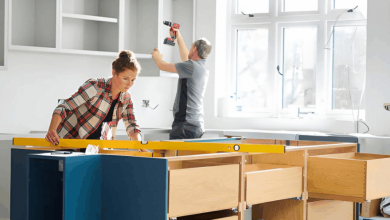The Rise of Compact, Connected Gyms: How Brands Like Speediance Solve Urban Living Challenges

It started quietly. A few people swapped their gym memberships for home setups, a few influencers began showing off sleek machines tucked into corners of their apartments, and before long, the idea of “going to the gym” started to feel… optional.
What happened next wasn’t just a trend — it was a transformation. The world of fitness moved home, but it didn’t shrink in quality. It evolved. Machines became smarter, smaller, and more connected than ever before. And in the middle of this new wave of innovation, brands like Speediance started redefining what a home gym could be — not a compromise, but a complete upgrade for modern urban life.
If you’ve ever struggled to balance a busy schedule, limited space, and the desire to stay fit, this new generation of compact, connected gyms was made for you.
The Space Problem That Urban Living Created
Let’s be real — city apartments aren’t exactly known for their generous floor plans. Most of us are lucky if we can find room for a yoga mat without bumping into furniture. And even if you could fit a full gym setup, it probably wouldn’t match your décor or your lease agreement.
For years, this made staying consistent with workouts harder than it needed to be. The intention was always there — the problem was logistics. Between traffic, crowds, waiting for machines, and the sheer time drain of getting to and from the gym, the traditional model just didn’t fit modern urban life anymore.
We didn’t need more equipment. We needed smarter solutions.
That’s where the compact, connected gym movement came in. Instead of taking up an entire room, these systems are designed to fold, mount, or stand neatly in a corner — giving you the functionality of a full gym without the chaos.
But the real magic isn’t just in the size. It’s in the connection. These systems — like Speediance — use digital resistance, built-in tracking, and interactive coaching to create an experience that feels alive. You’re not just lifting weights or pressing buttons; you’re guided, challenged, and corrected in real time.
It’s fitness that adapts to you — not the other way around.
The Speediance Difference
Let’s talk about Speediance for a moment, because it’s one of the clearest examples of how far this concept has come. On the surface, it’s a beautifully designed, all-in-one machine that replaces racks, cables, and dumbbells. But underneath that sleek exterior is serious intelligence.
Speediance uses digital weights, which means no stacks, no plates, no clunky noise — just smooth, adjustable resistance that automatically adapts to your performance. If you’re struggling mid-set, it eases off. If you’re cruising, it pushes you a little harder. It’s like having a personal trainer that actually knows your limits.
And it’s not just strength training. You can do cardio, mobility, and guided workouts that keep things interesting. The built-in screen tracks every rep, logs your progress, and even shows form feedback — so you’re never guessing if you’re doing it right.
It’s sleek. It’s smart. And it fits right into your life.
Convenience That Actually Sticks
Here’s something most people don’t talk about: motivation isn’t really the problem — friction is.
Every little barrier between you and your workout adds up. The commute. The crowds. The schedule juggling. Even getting changed can sometimes feel like too much after a long day. But when your gym is literally a few steps away — no drive, no prep, no waiting — suddenly, there’s no reason not to get started.
That’s what makes compact, connected gyms such a game changer. They eliminate the excuses. You can train in short bursts, at odd hours, in pajamas if you want to. A 25-minute session before breakfast. A quick lift after work. These micro-workouts add up fast — and because they’re easy to start, they’re easier to stick with.
Fitness stops feeling like a chore and starts becoming a natural part of your day.
Designed for the Way We Actually Live
The beauty of modern home gym systems isn’t just their function — it’s how they fit into our lives aesthetically and practically. Speediance, for example, doesn’t look like a chunk of gym metal sitting awkwardly in your living room. It’s clean, quiet, and surprisingly elegant.
Urban living is about balance — balancing ambition with space, energy with time, and design with utility. Compact gyms are built exactly for that sweet spot. They respect your environment while helping you reclaim your health without sacrificing comfort or style.
It’s not about creating a home around your fitness setup. It’s about having fitness that fits into your home.
A New Kind of Consistency
Ask anyone who’s managed to build a long-term fitness habit, and they’ll tell you: it’s not about motivation, it’s about access. The easier it is to show up, the more you do.
Compact, connected gyms like Speediance have cracked that code. They make workouts something you can do naturally, without ceremony or hassle. You don’t have to psych yourself up or carve out hours of your day. You just press start, get moving, and feel good about it.
And because everything is tracked — your progress, your goals, your performance — it creates a quiet kind of accountability. You can literally see how far you’ve come, which makes you want to keep going.
The Future Is Personal
The rise of compact, connected gyms marks a bigger shift than just fitness tech. It’s part of a broader trend where life becomes more personalized. From the way we work to the way we learn and even how we rest, people want experiences that mold around their needs, not the other way around.
Speediance embodies that idea beautifully. It’s not about competing with others — it’s about improving yourself, in your own space, on your own time. It gives people living in small apartments the same level of access to professional fitness as someone with a full home gym. That’s a pretty incredible leap.
Final Thoughts
The home gym revolution isn’t about abandoning the gym altogether — it’s about redefining what fitness looks like in today’s world. Compact, connected systems are making strength, mobility, and wellness more accessible than ever before.
And for city dwellers juggling work, life, and limited space, brands like Speediance aren’t just convenient — they’re essential. They bridge the gap between ambition and practicality, between wanting to get fit and actually being able to.
So maybe the future of fitness isn’t out there somewhere. Maybe it’s right here, waiting quietly in the corner of your living room, ready when you are.
Read More From Techbullion




